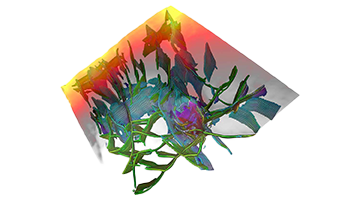Tailored Seismic Interpretation Solutions for Your Business
At dGB Earth Sciences, we understand that enterprises have specific seismic interpretation needs. Our service work provides custom solutions to enhance decision-making and exploration success. With our advanced OpendTect software and expert geoscientists, we deliver rapid, precise, and cost-efficient outcomes, transforming seismic data into a strategic asset for your business. Partner with us for superior subsurface understanding.

Interpretation Services
At our well-equipped offices in The Netherlands and the USA we offer advanced seismic interpretation services. Our experts have worked on data sets from around the globe. We have extensive experience in hydrocarbon exploration, field development, time-lapse monitoring, unconventional plays and geothermal studies.Our specialties are:
HorizonCube & Sequence Stratigraphy Interpretations
Seismic Attributes & Filtering
Fluid Migration Path Interpretations
Quantitative Interpretations
Seismic Diffraction Imaging Service
dGB Earth Sciences offers seismic diffraction imaging (DI) in association with Moser Geophysical Services. An important benefit of this partnership is the integration of the leading edge of DI and reflection imaging with the advanced interpretation technologies of OpendTect.Seismic diffraction is the response to subsurface discontinuity produced by faults, fractures, pinchouts etc. In conventional seismic processing, the rich detail of the diffraction events is masked by the much stronger reflection events. In diffraction imaging, we remigrate the data with a special filter to remove the reflection overprinting.
More Information
Data Management and Cloud solutions
Catalyze your company's transition to cloud-based data management with dGB Earth Sciences. We offer advanced software solutions that are not only cloud-compatible but also enhance your data storage and processes. Leveraging our active role in the OSDU forum, we stay ahead in cloud-standardization, ensuring secure, efficient, and tailored cloud strategies for your business needs.


